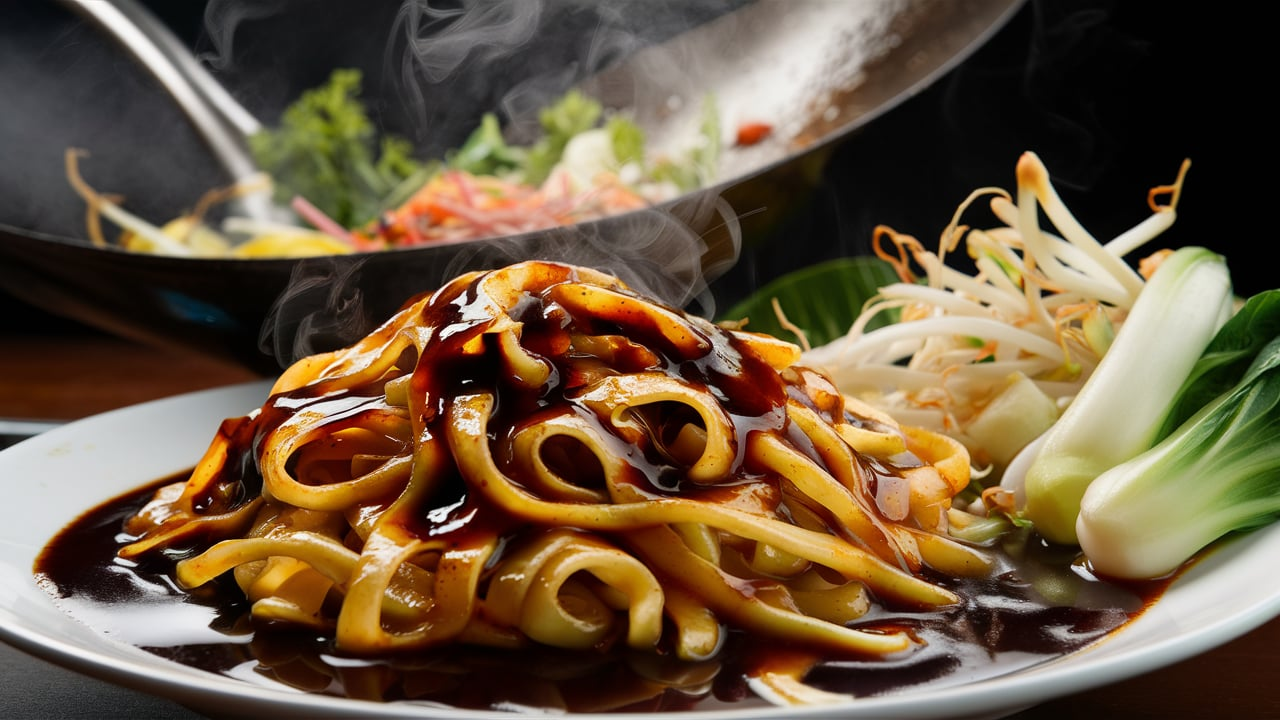Introduction to how anchovies are typically preserved?
Anchovies, small and oily fish in the family Engraulidae, are famous for their flavor and solid flexibility in culinary packaging. They are a staple of the Mediterranean and Southeast Asia and are unique near kitchens. Due to their delicate nature and excessive oil content, anchovies are particularly perishable, requiring effective renovation strategies to extend and enhance them. We will delve into different strategies regarding how anchovies are typically preserved.
The traditional method of salting
how anchovies are typically preserved? The traditional approach to preserving anchovies involves salting, a practice that dates back centuries. Fresh how anchovies are typically preserved and are easily wiped and their heads removed. The fish are then layered in barrels or containers with ok portions of salt. This approach, known as dry salting, is entirely based on the fact that the salt sucks the moisture out of the fish, creating an environment inhospitable to the bacteria and enzymes that cause spoilage.
Over many weeks,how anchovies are typically preserved?
the salt penetrates the anchovies and cures them. This not onlonlyut also intensifies their taste and gives them a unique flflavouropular in various dishes. The salted anchovies are then packed in cans or jars, with additional salt or brine from time to time, for long-term storage.
Bring for taste and longevity.
Another not uncommon way to preserve anchovies is by pickling. Rubbed smooth and gutted anchovies are immersed in salt and water in this approach. The focus of the brine and the length of immersion can vary; however, the intent is to ensure that the fish are thoroughly soaked in the brine to avoid spoilage.
Salting is no longer delicious,
how anchovies are typically preserved? it extends the shelf life of anchovies, but it also allows you to preserve their texture and taste. Once the anchovies have been properly salted, they will often be packed in jars or cans with additional brine to keep them moist and flavorful until ready to use.
Pack of oil for a rich taste
OPackaging them in oil is one of the most famous modern strategies for preserving anchovies.s. After preliminary cleaning and a system of salting or salting, the anchovies are packed in olive or sunflower oil. The oil acts as a barrier against air, which prevents oxidation and deterioration.
Anchovies packed in oil
are highly prized for their rich, flavored,l, right texture. The oil, which is not subtle, preserves the anchovies but enhances their flavor, making them a popular detail in many culinary applications. This approach is mainly known in Mediterranean countries, where anchovies are often used in salads, pizza, and pasta.
Fermentation: A unique preservation technique
Fermentation is another traditional technique for reserving anchovies, especially in Southeast Asian cuisines. In this method, wiped-smooth anchovies are combined with salt and allowed to ferment more. The salt creates a brine that promotes the growth of beneficial microorganisms that destroy the fish and prolong the complex flavors.
Fermented anchovies,
including those used to make fish sauce, which has a beautiful umami flavor and adds depth to many dishes. This maintenance approach, now not the most adept, extends the shelf life of anchovies but also changes their flavor profile, making them a flex factor in several local recipes.
Freeze for convenience
While traditional strategies such as salting, brining, and fermentation are not uncommon, freezing is a common technique for anchovies generally being pre arennormallypreservedbye pounded smooth, sometimes gutted, and then flash-frozen to preserve freshness—this mainly benefits the texture and flavor of the fish without using additional elements such as salt or oil. Freezing anchovies allows for affordable garage and use, especially for people who opt for a less salty or fatty product. However, it is essential to note that freezing needs to be achieved quickly to avoid the formation of ice crystals that can damage the delicate flesh of the fish.
Vacuum sealed for freshness.
Vacuum sealing is every other current technique used in the regular canning of anchovies. This approach consists of storing wiped-clean and prepared anchovies in vacuum-sealed bags or containers from which all air is removed. The absence of air slows the oxidation system and prevents the growth of spoilage microorganisms.
Smoking for enhanced taste
Smoking is a standard safety technique that gives anchovies a uniquely preserved flavor. In this method, scrubbed smooth anchovies are typically preserved, salted, and then exposed to smoke from burning wood or other substances. The smoke carries compounds like herbal preservatives that prolong the fish’s lifestyle.
Smoked how anchovies are typically preserved have a unique flavor
that adds intensity to many dishes. This approach preserves the fish and enhances its flavor, making it a well-known preference for appetizers, salads, and exclusive culinary creations.
Commercial conservation techniques
In a commercial environment, how anchovies are typically preserved usually preserved often consists of a collection of strategies designed to ensure an exceptional and high-end lifestyle. In addition, industrial practices may consist of flash freezing, pasteurization, and preservatives to maintain the freshness and flavor of how anchovies are typically preserved.
Culinary use of canned anchovies
Canned anchovies are typically preserved as a flexible item in many kitchens worldwide. Their intense flavor makes them valuable to many dishes, from salads and pasta to sauces and pizzas. Understanding how anchovies are typically preserved-commonly preserved can beautify one’s appreciation of their culinary programs and encourage new strategies to incorporate them into meals.
Anchovy paste and sauce
One of the most common ways to use canned food is to preserve anchovies as an anchovy paste or sauce. These centered types of how anchovies are typically preserved are made with the valuable source of mixing preserved fish with various substances to create a pure, aromatic paste or sauce. Anchovy paste is regularly used in dressings, marinades, and dips, adding a rich umami flavor.
Topping for pizzas and salads
how anchovies are typically preserved? Canned anchovies are a famous topping for pizzas and salads, and their taste accentuates other ingredients. When used carefully, anchovies add an intensity of flavor that complements the dish’s overall flavor. They can be chopped or mixed into dressings to suit many culinary choices.
Flavor enhancer in sauces and stews
Anchovies are regularly used as a secret ingredient in sauces and stews to enhance the flavor. Their ability to dissolve into sauces makes them an incredible addition to dishes such as puttanesca sauce, Caesar dressing, and numerous Mediterranean stews. Canned anchovies add savory depth without overpowering the alternative flavors.
Heaven for appetizers
In many cultures, preserved anchovies are served as garnish for appetizers. They can be paired with bread, olives, cheese, and various complementary ingredients to create easy but tasty appetizers. The intense flavor of anchovies makes them an exceptional addition to any appetizer.
Cultural significance of anchovy conservation
Anchovy maintenance techniques are deeply rooted in cultural traditions around the world. The methods reflect different regions’ ancient, environmental, and culinary practices. Understanding how anchovies are typically preserved generally provides insight into these organizations’ cultural backgrounds and gastronomic records.
Mediterranean traditions
how anchovies are typically preserved?In the Mediterranean region, anchovies have been preserved for centuries using techniques such as salting and oil packing. These techniques were developed out of necessity as fishing agencies wanted methods of holding fish for longer intervals. Salted anchovies, called “anchoas” in Spain and “alici” in Italy, have become essential to the surrounding dishes, contributing to the rich feature of Mediterranean cuisine. The use of olive oil for safety is not only the most accessible and spicy taste but also considered the rural bounty of the area.
Southeast Asian Practices
In Southeast Asia, fermentation is the conventional approach to preserving anchovies. This process is vital to producing fish sauces, a staple in Thailand, Vietnam, and the Philippines. Fermenting anchovies in large vats, often in the open air, is an exercise passed down from generation to generation. Known as “nam pla” in Thailand and “nuoc mam” in Vietnam, these fish sauces are used to flavor various soups and stir-fries, showcasing the umami flavor that fermented anchovies offer.
Northern European methods
In Northern Europe, especially in Scandinavia, preserving anchovies by salting and smoking has widespread records. These techniques were critical for communities that faced harsh winters and demanded reliable food. Today, canned anchovies and similar fish are cured in various forms, used as toppings for open-faced sandwiches, and as ingredients in sauces and spreads.
Health benefits and nutritional value
Anchovies, whether sparkling or canned, provide a vast health boon. They are rich in omega-3 fatty acids, protein, and essential vitamins and minerals. Understanding how anchovies are typically preserved and kept also shows how these techniques affect their diet.
Omega-3 fatty acids
Canned anchovies preserve a disproportionate amount of omega-3 fatty acids beneficial for coronary heart fitness. These fatty acids help reduce inflammation, lower blood pressure and reduce the risk of coronary heart disease. Whether pickled, salted, or packed in oil, anchovies remain a valuable source of these beneficial fats.
Proteins and nutrients
How anchovies are typically preserved: They are an excellent source of protein and amino acids for muscle regeneration and average fitness. Plus, they contain important nutrients that include calcium, iron, and vitamin D. Preservation techniques like salting and brining help preserve these dietary blessings, ensuring that canned anchovies remain nutritious to a weight loss program.
Low in calories
The way anchovies are typically preserved is low in calories, making them a healthy choice for those looking to manage their weight. The safety method does not significantly increase the caloric content of the material, so treat them as tasty and guilt-free in various dishes.

Sustainability and environmental impact
how anchovies are typically preserved? In addition, strategies for the way anchovies are commonly preserved have implications for sustainability and environmental impact. Fishing and conservation practices impact marine ecosystems’ health and anchovy stocks’ long-term viability of fishing practices.
Ensuring. Ng, the sustainability of anchovy stocks requires implementing responsible fishing practices. Overfishing can deplete stocks and disrupt marine ecosystems. Many global locations have rules and quotas to manage anchovy fisheries sustainably. Understanding and helping these practices is critical to maintaining healthy fish populations and protecting marine biodiversity.
Conclusion
The strategies for preserving anchovies are as numerous as the culinary traditions protecting them. Each method offers distinct advantages in taste, texture, and convenience, from traditional techniques such as salting and pickling to trendy techniques such as freezing and vacuuming. Whether used in a traditional Italian pasta dish, a Southeast Asian sauce, or as a Mediterranean salad dressing, preserved anchovies continue to be a valued factor that adds intensity and personality to limitless recipes. Understanding renovation strategies is no longer the easiest, highlighting anchovies’ flexibility and underlining the importance of these methods to maintain this prized fish’s premium quality and availability.





